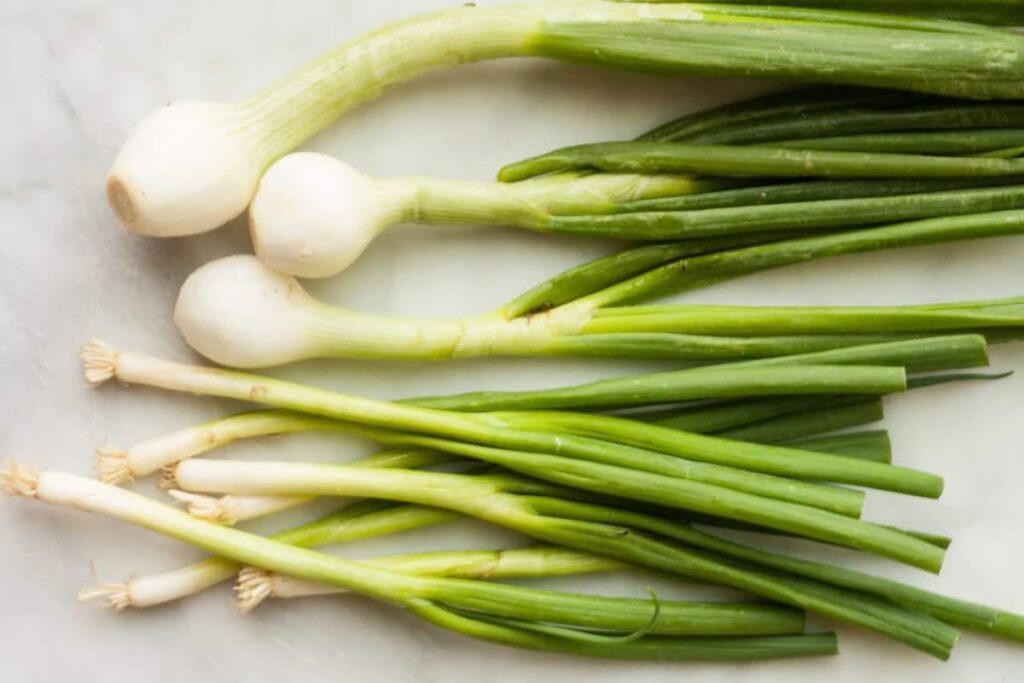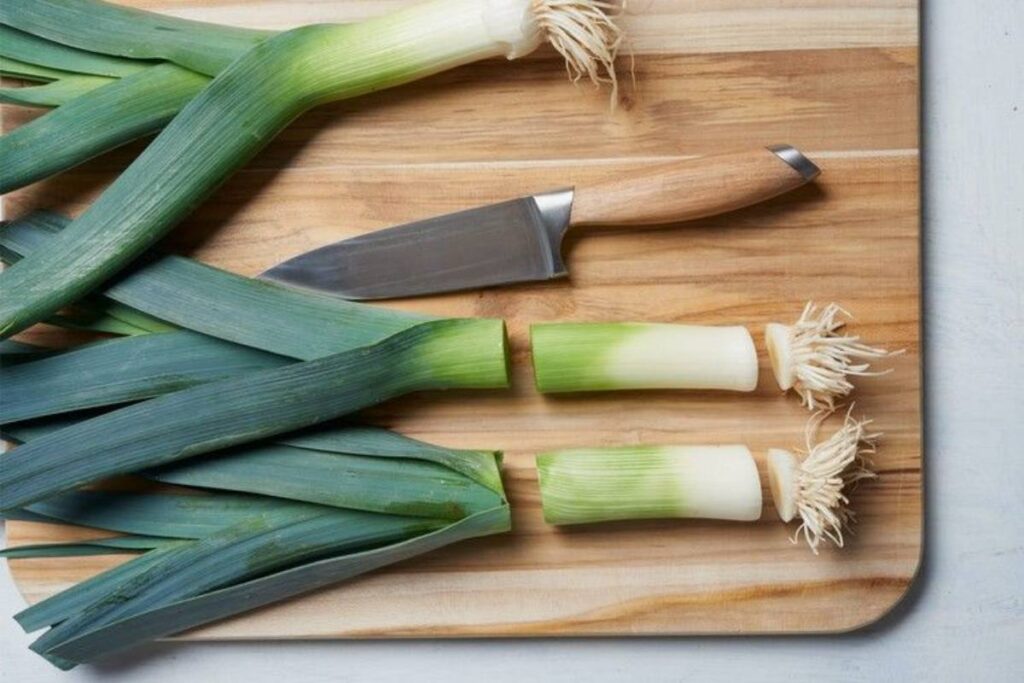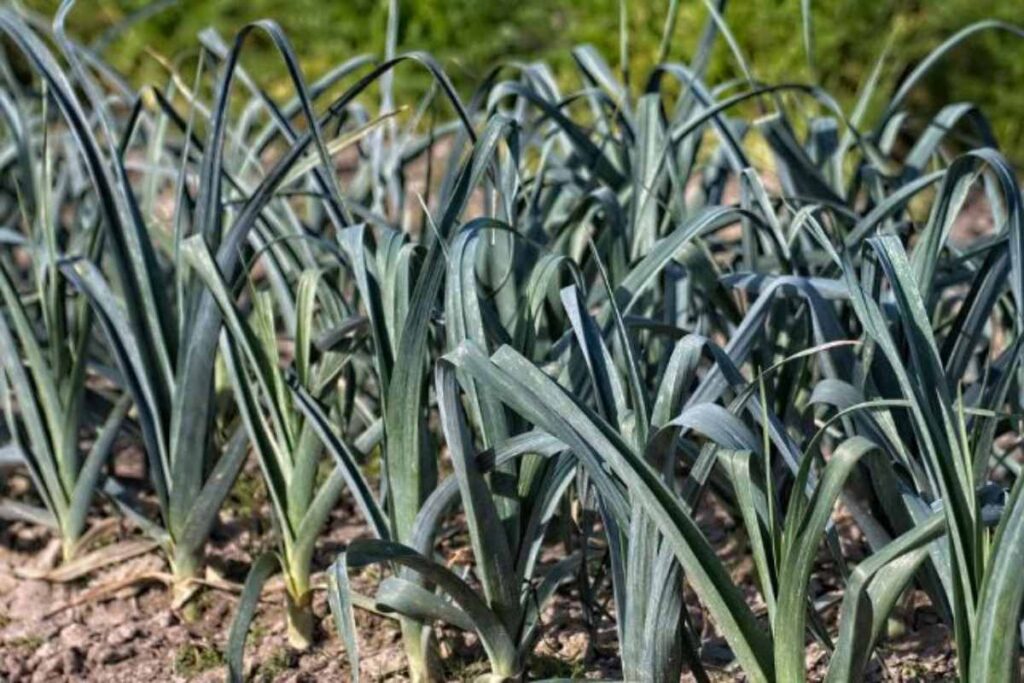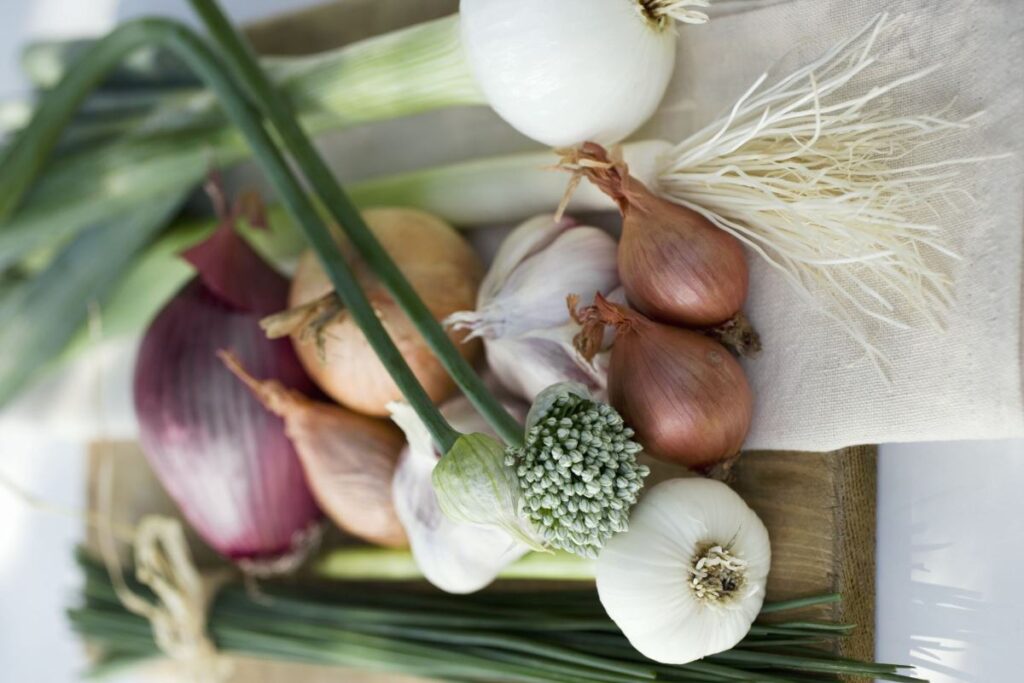
Although leeks can be eaten raw, like fruits, they can also be used to make soups, casseroles, salads, and stir-fries, giving them a subtle onion taste. Leeks are a simple-to-grow vegetable that is also a member of the onion family.
However, despite their very close similarities, leeks are very different from onions. Leeks can be grown from seed or seedlings, starting early due to their long growing season, lasting between 120 and 150 days.
Is a Leek an Onion?
Leeks, unlike onions, have blue-green leaves that form the stalk at its base and branch outward at the top. Although its dark green leaves serve as seasoning, the edible part of a leek is the white stem, which grows approximately 6 inches above the ground.
Although the leek is a member of the onion family, it does not form a bulb. The thick, fleshy stalk is about the same diameter at the base and resembles a large green onion without a bulb.
ALSO READ: Questions You Must Ask Yourself About Your Diet
Leeks are grown like onions. Plant seeds or transplants in late fall or early winter. Then, set the plants out in early spring, when they are about the size of a pencil, till the soil around the plants to make the edible portion longer and whiter.

What Is Leek Used For?
Leeks like garlic, shallots, and all types of onions belong to the allium family. Consequently, like all members of the onion family, a leek is used to enhance the flavor and taste of foods. When a leek is cooked, its raw flavor morphs into a sweet and mellow flavor.
As a result, a leek can be consumed individually, making it somewhat similar to a vegetable. Leeks can be used as a viable alternative to onions in most soup recipes. When a leek is used in soups, casseroles, and stews, it gives the food a subtle, more complex flavor.
Leeks have been a favorite, in cuisines around the world for thousands of years. Ancient Egyptian tomb paintings feature leeks among harvested vegetables. The Chinese have long attributed medicinal properties to the vegetable, and “jiu,” the Chinese character for leek, sounds like the word for longevity.
What Are the Side Effects of Eating Leeks?
Most people can safely consume leeks, but individuals who are allergic to them should stay away from them. Dialyl disulfide, a substance found in leeks, has the potential to induce skin reactions in certain people, including contact dermatitis and an itchy, red rash.
Additionally, leeks have a high concentration of fermentable oligo-, di-, and mono-saccharides and polyols, or FODMAPs. Some carbohydrates in garlic and leeks, known as FODMAPs, are not well absorbed by the digestive system when consumed in concentrated form.
POLL—Should the Government Increase Taxes on the Wealthy To Reduce Economic Inequality?
People sensitive to FODMAPs may experience gas, diarrhea, and bloating after eating high-FODMAP foods. Those with IBS are more likely to have FODMAP sensitivity and might need to limit their intake of foods like leeks to avoid digestive issues.

How and When to Plant Leeks
Leek seeds can be sown in pots or a seedbed before being transferred to their final location in the garden for growth. The final planting bed for leeks should ideally be ready several weeks before planting by selecting a sunny spot that stays dry throughout the winter. Well-composed organic materials and proper drainage are essential for healthy soil.
To plant a leek, it is advised to get a head start on spring gardening by sowing leek seeds indoors in flats eight to ten weeks before the latest anticipated date of frost. About ten weeks after planting, a leek seedling would be the same size as a pencil.
At this time, the seedlings are to be transplanted, although one should harden them before moving them outside. Consequently, a day before being transplanted, ensure that the seedling is provided with lots of water. Leeks become fully grown between 120 and 150 days, making a spring harvest in the fall.
Also, ensure that the longer stems are covered during the growing season. This can be done by gradually putting dirt around the stems or covering them with straw. Another DIY trick is that blanching makes the stems soft and pale while encouraging plant development.
WATCH: Organize Your Kitchen and Save Time with These Genius Hacks

Which Is Healthier, Leeks or Onions?
Leeks and onions are two nutritious, low-calorie veggies that complement each other nicely in soups and stews. Although onions and leeks have similar nutritional values, combining them with other high-protein vegetables helps to create a balanced and healthy diet.
Although leeks and onions can be consumed raw, an onion in its raw form contains less fat and calories. Consequently, experts recommend onions to people who aim to reduce calorie intake, lose weight, or maintain weight. One possible benefit of onions is that they taste stronger than leeks.
Additionally, leeks, in comparison to onions, possess less sodium; for example, in 100 grams of onion, there is 4 mg of sodium compared to 20 mg in leeks. However, leeks contain more vitamins and minerals, containing up to 10 times the amount of iron in Onions.
You Might Also Like:
Barack Obama Shares a Heartfelt Tribute to Joe Biden Amid Rumors of Friction Between Them
Melissa Gilbert Opens Up on Having Misophonia, Says It Made Her Childhood ‘Dark and Difficult’
Italy Beach Imposes Regulations and Selfie Limits Amid Peak Tourist Season
Connecticut Begins Long Road to Recovery After Deadly Floods
Daniela Larreal Chirinos Found Dead in Her Home After Choking on Food
